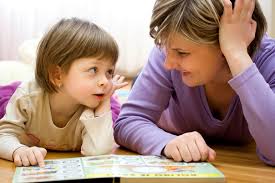A child is displaying a challenging behaviour and you are at your wits end trying to know the best way to address the behaviour and guide a change but are unsure of how or what to do.
A child displays a behaviour as a way of expressing themselves. There is generally always a reason behind a behaviour, whether it be lack of ability to verbalise, frustration, etc.
It may be they don’t yet have the skills or development to express themselves or know how to regulate themselves. It may be the environment or the lack of understanding or there may be a trigger to address.
Analyzing the behaviour, taking into account factors such as the age, developmental stage, surroundings, etc can be invaluable as it enables us to delve deeper in to why a behaviour is occurring and then provide the opportunity to guide and support the child.
Whilst we may put it down to being challenging or difficult there is always an underlying cause to their behaviour.
Establishing the root cause assists in the strategies to address and understand the behaviour.
Strategies for specific behaviour causes
Behaviour
Tip
Fear/anxiety/embarrassment:
Don’t chastise the child for their feelings. It doesn’t help the situation. We should help the child identify and understand their emotions and feelings and help them with ways to cope/address the feelings. Often a hug will help to defuse the situation quickly. If necessary, or depending on the situation, remove them from the difficult situation.
General whining:
This is just their general way of dealing with not being able to cope with the situation or doing what they want such as you said no the bickie they really wanted…they do need to deal with ‘NO” and it is not recommended to try to bargain or negotiate or give in in these situations or you will attract this type of behaviour every time they want something.
Over stimulation:
Give them a hug to help to defuse the situation and quietly and gently move them onto something else or another room such as go into the kitchen for a snack or get them to help you with something else. Sit and do a quiet activity with them to re-direct their attention and calm them.
Boredom:
Yes, children can get bored too. It comes from a lack of stimulating activity or interaction. Play with them or initiate a new game/activity or just talking to them. Get them involved in what you are doing or give them a task. Stop what you are doing and have a change of scenery such as going outside to play or to the shop, etc. Make up a story together, etc.
Tantrum at leaving or completing something:
Pre-warn a child. Some children need some fore warning about change. If a child doesn’t want to leave let’s say the park and you always have trouble with a quiet retreat back home then you need to offer them some control over the situation. Such as: give them 2 warnings… one such as “we are leaving in 3 minutes” (concise and to the point and a command not a question so there is no question about staying longer or negotiation) then another warning “1 minute left”. This gives them the chance to finish what they are doing and helps a child prepare for the end of the activity.
It allows them to feel a little more in control of the situation. You can then, if they are protesting once it is time to go, give them the choice of something such as “will we walk or run to the car?” This not only gives them back some control but also helps to distract them from the fact they are leaving against their wishes.
If they are still protesting then it is important to just keep going… don’t give in and say they can stay a bit longer or try to negotiate as it will open the way for that behaviour to occur all the time. It is ok to acknowledge their feelings about not wanting to go but not to keep fuelling the situation.
Address it quickly and smoothly such as “I know you want to stay but….. (whatever is happening next talk about to distract them and then no more comment on it).
Another tip is to talk with them before you get to the park, let’s keep that as an example, about what you expect, how long you are staying, etc. when they are in the frame of mind to listen not when you are leaving the park and they are arguing about leaving.
Food related: (such as hungry or thirsty)
If a child is hungry or thirsty it can affect their behaviour. The only real solution here is to give them a drink or something to eat. Preferably a nutritious snack or you may have other sugar or additive related behaviours. It’s a good idea to provide children with a number of snacks during the day…generally children need smaller meals offered more often during day.
“Neediness”:
This is generally as the child ‘needs’ to get your attention. You need to determine if their need is warranted, and if is, you will stop the child’s misbehaviour by talking to them, providing the attention they seek. Neediness can also be a sign of another issue such as boredom, shyness, etc. you need to address the root of the problem.
Sickness:
If a child is unwell, especially if they are unable to communicate where it is they feel unwell, they may display tantrum/whiny behaviours. Try to establish the cause of the problem and once it is established you can help to address the ‘problem’ and help them feel better which in turn should minimise or stop the whinging. A child’s behaviour can also provide clues to the problem.
Inability to communicate effectively:
Try to help the child express themselves. Get them to show you what it is they want/need. Teach them some non-verbal ways to communicate. Speak calmly and ask them to repeat it. It is ok to let them know you are trying to know what it is they are saying but are having a little trouble. Use reflective language- if you can somewhat decipher what they are saying say it back to them to clarify and it helps them to understand the ‘correct’ way to communicate what it is.
Lack of routine/confusion:
Children need a routine or consistency and stability in their life. Without it they will act out as they will be confused as to what to expect. This applies to the daily routine as well as the way you deal with their behaviour. If you do one thing and then the next time do something different they will not know what to expect.
Discomfort:
Establish what the cause of the discomfort is…shoes too tight, too hot, etc.
Frustration:
This is generally as the child wants to be able to achieve or master something and it is not possible at that moment. Try helping them to achieve their task or offer a solution or alternative. Provide things that are a little above their skill but not totally unachievable… it needs to be age/stage appropriate. It will continue and will not be any help if you do it (the task/problem) for them all the time or it is above what they are physically able to do. A child needs ‘stepping stones’ to master a skill. If all else fails in the attempt at helping/guiding them to ‘success’ then remove the source of the frustration until another time when they are more able. And if all else fails use distraction (get child involved in something else).
Overtiredness:
If it is not possible for the child to have a rest or nap or do a quiet, relaxing activity with you helping to keep the calm.
Also consider if it is needed to revise the daily nap or bedtime schedule/routine. Or if need be do a diary to find the trigger times for the tiredness and it will help to find the ‘problem times’ and what was happening before them. It may also be if they wake at night then you may need to solve night-waking or other sleep disturbances.







